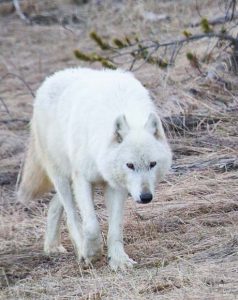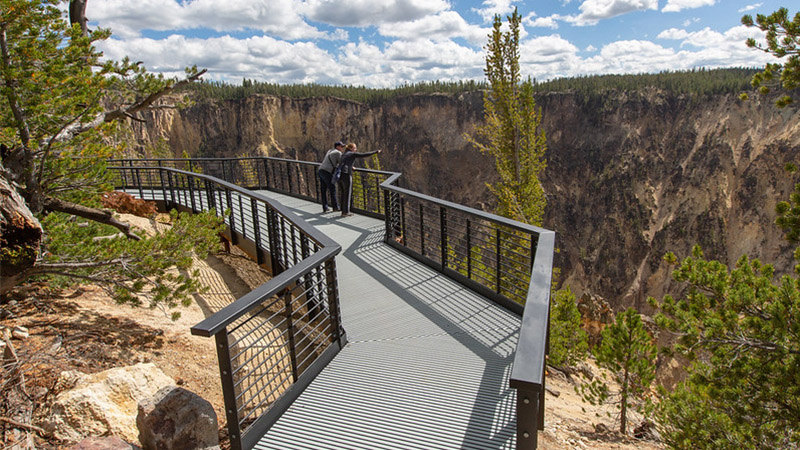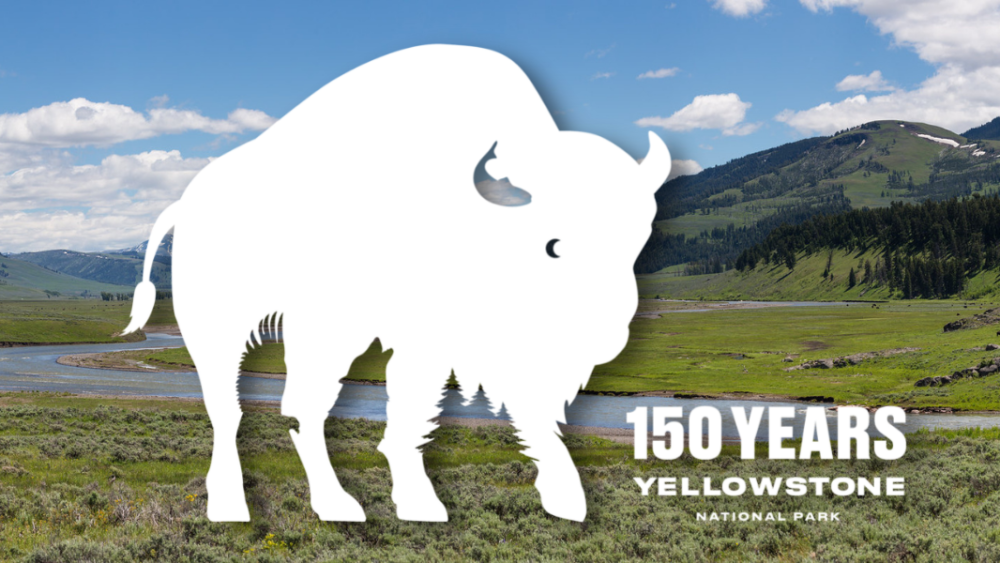
By Lisa Diekmann, President & CEO
Today, March 1, 2022, marks Yellowstone National Park’s 150th anniversary. One of the many things that makes today different from March 1, 1872, is that it will no longer take an act of Congress to protect and preserve Yellowstone, it will take bold actions from everyday stewards.
Yellowstone has provided inspiration and wonder to people for thousands of years. Today it remains protected for the benefit and enjoyment of all people.
Every visitor to the park is a steward. Every lover of wildlife, hiker of trails, marveller of geysers and mudpots, peaks and rivers. We are all stewards with the opportunity to protect this place we love and continue to learn from it for the next 150 years and beyond.
Yellowstone National Park provides a natural, wild, and intact ecosystem for almost 400 species of wildlife, but it cannot remain a viable home for these animals without thoughtful efforts.

Wolves had been eradicated from the park prior to the reintroduction in 1995. NPS/Neal Hebert
In 1995, gray wolves were reintroduced to Yellowstone National Park. This monumental undertaking marked the first deliberate attempt to return a top-level carnivore to a large ecosystem. This internationally acclaimed conservation effort would not have happened without the support of everyday stewards. Yellowstone Forever donors provide 60% of the Yellowstone Wolf Project’s annual budget along with funding to other wildlife research and protection projects, ensuring Yellowstone’s wildlife remain protected forever.
Yellowstone is also home to more than 1,100 miles of trails. From backcountry paths that end at hidden waterfalls, to the heavily used walkways that overlook the Grand Canyon of the Yellowstone—these trails won’t be here in 150 years without protection.
After more than 70 years of unforgiving weather, erosion, and damage from increased use, the trails around the Grand Canyon of the Yellowstone were in need of serious maintenance. Over the past several years, Yellowstone National Park has been working to rehabilitate these trails and this was only possible thanks to funding from everyday stewards who understood that seeing the iconic Grand Canyon of the Overlook can be life changing, and the chance to experience its awe should be there for the next generations.

Inspiration Point overlooking the Grand Canyon of the Yellowstone after rehabilitation. NPS/Jacob Frank
As more and more people travel to Yellowstone, we must also work together to find ways to be more sustainable—from decreasing light pollution to minimizing our carbon footprints.
Yellowstone has always reflected the changing face of what it means to be leaders in resource stewardship. As we look to the future, everyday stewards have an opportunity and a responsibility to help Yellowstone set a standard for park conservation and stewardship worldwide.
As the world’s first national park, Yellowstone has inspired conservation across the nation and around the globe. Since its inception in 1872, 63 national parks have been created across 52.2 million acres. And still, the first of them—Yellowstone National Park—remains a refuge for people to reconnect with nature and learn from all its wonders.
I hope you’ll join me today in commemorating the achievements of the past 150 years and committing to the bold actions it will take from all of us to ensure the future of Yellowstone for the next 150 years and beyond.
Read more about the 150th anniversary of Yellowstone National Park and how you can get involved.

Comments are closed.